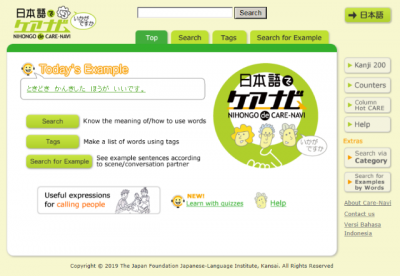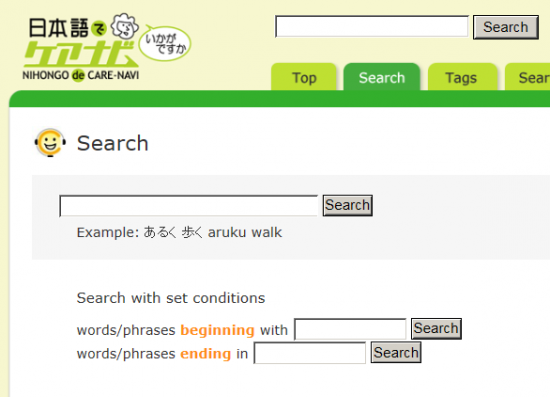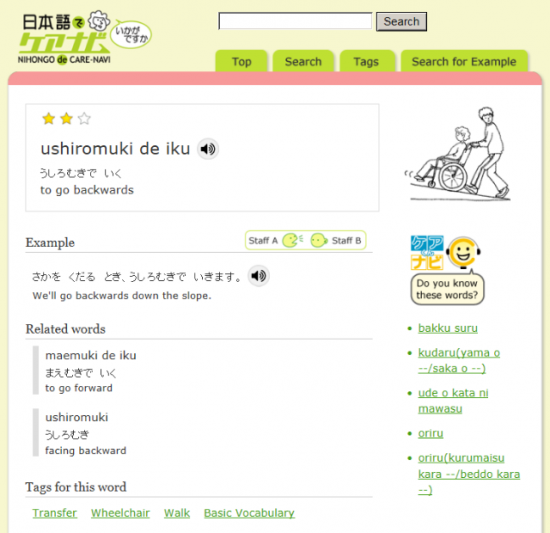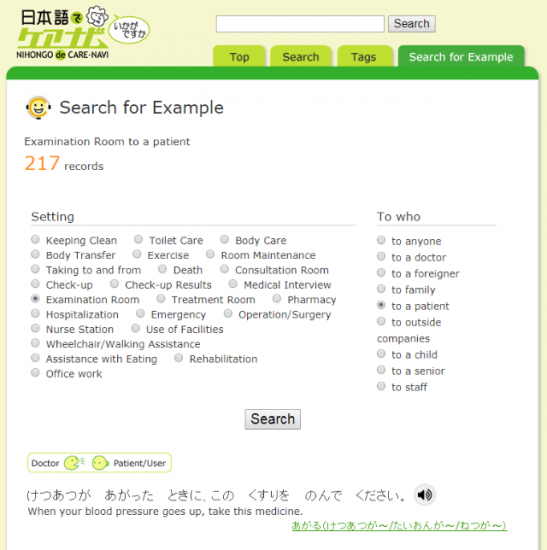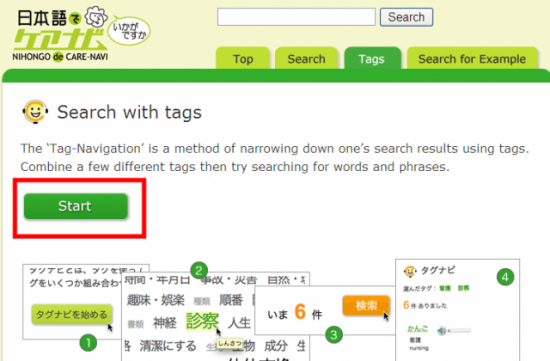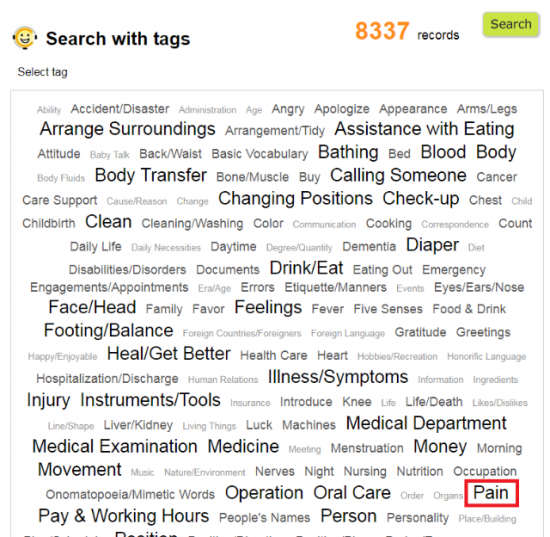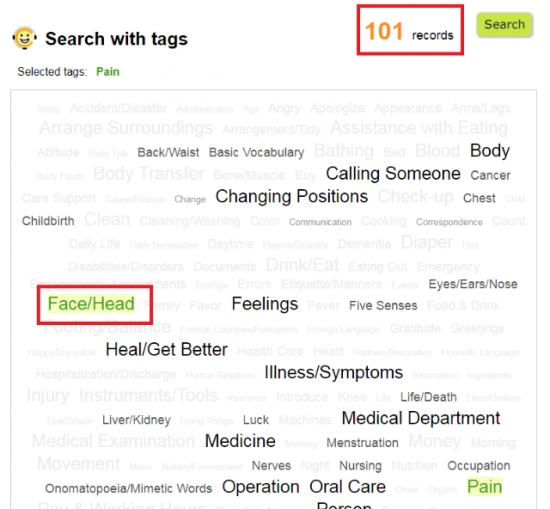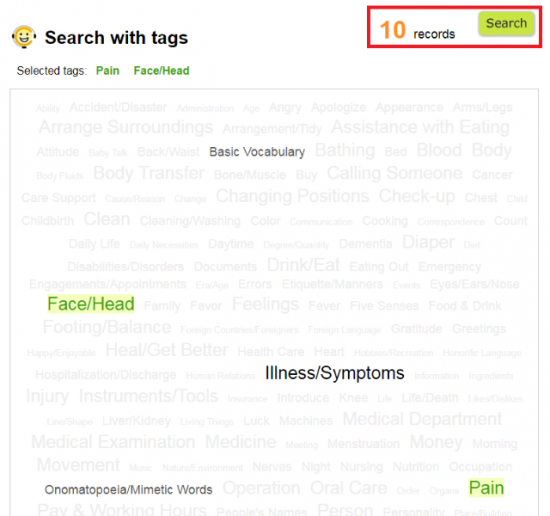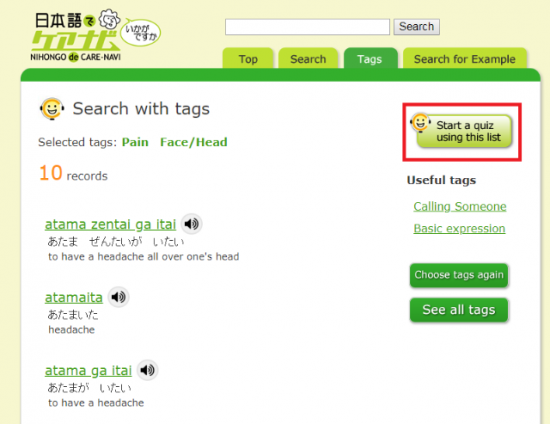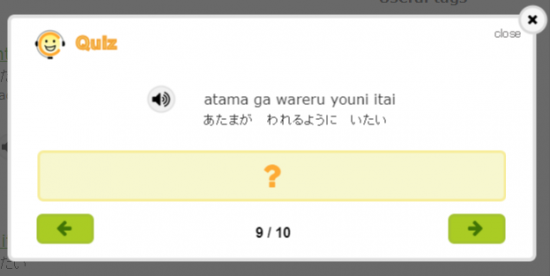On this site you can look up the meanings for words and expressions used in the fields of nursing and caregiving, with both Japanese-English and Japanese-Indonesian language support. You can also listen to audio.
- Input kana, kanji, romaji, English or Indonesian and the appropriate translation will appear. You can hear spoken Japanese for the vocabulary and example sentences.
- The vocabulary here is not limited to phrases for illnesses, pain, symptoms and so on. Also included are terms used in the hospital, from a patient arriving at reception to their receiving medicine, plus useful expressions to describe various feelings - anger, happiness etc.
- You can choose tags for keywords and make your own vocabulary list for the terms you want to remember
- You can look for example sentences for various different situations, i.e. 'Check-up', 'Hospitalization' and so on. To clarify the setting and style of language used, for each example sentence you are given information on who is speaking to whom.
Vocabularies related to infectious diseases such as "COVID-19" and "variant strains" have also increased!
How to...
Let's try making our own personal word list. Then we'll try a quiz.
On the top screen, click on 'Tags'.
Next, click 'Start'.
You'll be taken to the 'Search with tags' list.
From the many you see displayed, choose a tag (keyword) that you would like to make a list related to.
As an example, let's look at expressions used when someone has a headache.
First, click on 'Pain'
From the total number of items, 8,337 records in all, you can see that there are 101 related to 'Pain'.
The tags you choose change colour.
From here, let's narrow down our search further, to include only pain related to the head.
Click on the tag marked 'Face/Head'.
The number of entries available decreases to 10.
To see the list, click on 'Search'.
The list of 10 entries is shown. All these are phrases or expressions related to both 'Pain' and 'Face/Head'
If you want to take a quiz using these words and expressions, please click on the button at the top-right of the screen.
On the quiz screen, click on the button that says 'Start a quiz using this list' and the quiz will begin.
During the quiz, press the button marked '?' to see the English translation.


